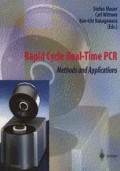Abstract
The bacterium Bordetella pertussis is the causative agent of whooping cough, which is an infectious disease occurring worldwide with a high incidence among young, unvaccinated infants. Related species which may also cause pertussis syndrome are B. parapertussis (milder respiratory infection) and B. bronchiseptica (primarily infecting animals). The striking and unique presentation of classical pertussis does not usually present a clinical diagnostic dilemma. Atypical pertussis, however, which may occur with mild or absent symptoms in adults or previously vaccinated children, offers a greater diagnostic challenge to the clinician. It has been shown that atypical illness in adults is common, endemic, and usually unrecognized [1]. The epidemiological implications of unrecognized pertussis are that exposure of unimmunized infants to individuals with pertussis places them at high risk and that pertussis remains endemic in society. The recent increase in the incidence of pertussis in the United States [2] and the fact that other agents (such as adenovirus, cytomegalovirus, or chlamydiae) are thought to cause pertussis syndrome underscore the need for rapid and accurate diagnostic methods to guide therapeutic and preventive interventions.
Access this chapter
Tax calculation will be finalised at checkout
Purchases are for personal use only
Preview
Unable to display preview. Download preview PDF.
References
Deville JG, Cherry JD, Christenson PD, Pineda E, Leach CT, Kuhls TL, Viker S (1995) Frequency of unrecognized Bordetella pertussis infection in adults. Clin Infect Dis 21: 639–642
Centers for Disease Control and Prevention (1993) Resurgence of pertussis: United States 1993. Morbid Mortal Weekly Rep 42: 952–960
Wadowsky RM, Michaels RH, Libert T, Kingsley LA, Ehrlich GD (1996) Multiplex PCR-based assay for detection of Bordetella pertussis in nasopharyngeal specimens. J Clin Microbiol 34: 2645–2649
Glare EM, Paton JC, Premier R, Lawrence AJ, Nisbet LT (1990) Analysis of a repetitive DNA sequence from Bordetella pertussis and its application to the diagnosis of pertussis using the polymerase chain reaction. J Clin Microbiol 28: 1982–1987
Backman A, Johansson B, Olsen P (1994) Nested PCR optimized for detection of Bordetella pertussis in clinical nasopharyngeal samples. J Clin Microbiol 32: 2544–2548
Schlapfer G, Cherry JD, Heininger U, Uberall M, Schmitt-Grohe S, Laussucq S, Just M, Sterhr K (1995) Polymerase chain reaction identification of Bordetella pertussis infection in vaccinees and family members in a pertussis vaccine efficacy trial in Germany. Pediatr Infect Dis J. 14: 209–214
Van der Zee A, Agterberg C, Peeters M, Schellekens J, Mooi FR (1993) Polymerase chain reaction assay for pertussis: simultaneous detection and discrimination of Bordetella pertussis and Bordetella parapertussis. J Clin Microbiol 31: 2134–2140
Loeffelholz MJ, Thompson CJ, Long KS, Gilchrist MJR (1999) Comparison of PCR, culture, and direct fluorescent -antibody testing for detection of Bordetella pertussis. J Clin Microbiol 37: 2872–2876
Centers for Disease Control and Prevention. 1997. Case definitions for infectious conditions under public health surveillance. Morbid Mortal Weekly Rep 46: 25
Lind-Brandberg L, Welinder-Olsson C, Lagergard T, Taranger J, Trollfors B, Zackrisson G (1998) Evaluation of PCR for diagnosis of Bordetella pertussis and Bordetella parapetussis infections. J Clin Microbiol 36: 679–683
Farell DJ, Daggard G, Mukkur TKS (1999) Nested duplex PCR to detect Bordetella pertussis and Bordetella parapetussis and its application in dioagnosis of pertussis in nonmetropolitan Southeast Queensland, Australia. J. Clin Microbiol 37: 606–610
Author information
Authors and Affiliations
Editor information
Editors and Affiliations
Rights and permissions
Copyright information
© 2001 Springer-Verlag Berlin Heidelberg
About this chapter
Cite this chapter
Reischl, U., Burggraf, S., Leppmeier, B., Linde, HJ., Lehn, N. (2001). Rapid and Specific Detection of Bordetella pertussis in Clinical Specimens by LightCycler PCR. In: Meuer, S., Wittwer, C., Nakagawara, KI. (eds) Rapid Cycle Real-Time PCR. Springer, Berlin, Heidelberg. https://doi.org/10.1007/978-3-642-59524-0_33
Download citation
DOI: https://doi.org/10.1007/978-3-642-59524-0_33
Publisher Name: Springer, Berlin, Heidelberg
Print ISBN: 978-3-540-66736-0
Online ISBN: 978-3-642-59524-0
eBook Packages: Springer Book Archive

